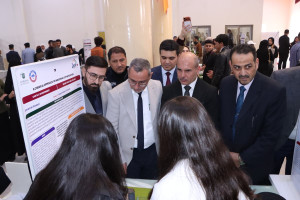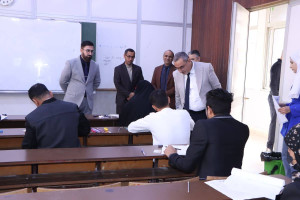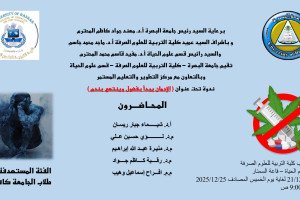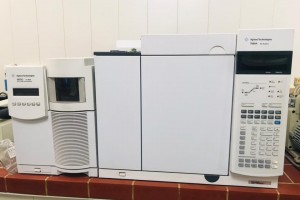
The College of Education for Pure Sciences at the University of Basrah organized a scientific lecture entitled (The association of genetic polymorphisms of the genes of some interleukins
among patients with respiratory allergies in Basrah Governorate)
The lecture presented by the student (Athraa Tohme Kased) included
The primary objective of the respiratory system is to facilitate the process of air exchange, carrying oxygen and transporting it through the respiratory system, and removing carbon dioxide gas.
Allergies and asthma are considered the most important chronic diseases that affect the respiratory system in the world, and it is the fourth major chronic disease according to the classification of the World Health Organization, as allergies cover a wide range of diseases, such as allergic rhinitis, allergic asthma, and others.
Allergy: It is an abnormal immune reaction that occurs as a result of an allergic antigen response. Allergy is a series of immune reactions that lead to the emergence of various symptoms such as rhinitis, asthma or dermatitis. These reactions may threaten life, such as anaphylaxis.
Asthma: It is a chronic inflammatory disease of the airways. Asthma disease is characterized by several clinical symptoms, including chest tightness, shortness of breath, coughing and wheezing in the early morning or night. Asthma can also be described as a complex chronic disease resulting from the interaction between genetic predisposition and environmental factors, 2017) Hussein and Saddam).
Cytokines Cytokines: They are molecules or proteins that communicate and communicate in the body as if they are messages in the immune system that are secreted by the cells of the immune system to activate other immune cells. They can be secreted from several different cells such as Mast cell, Macrophage, Basopil, T cell, and the cytokines are either endogenous. Secretion from Autocrine immune cells, where they are secreted from the cell and affect the cell itself, or exit from the cell to affect a neighboring cell, Paracrine, or secreted to affect other cells of the body, Endocrine.
IL-4 gene Interleukin 4 gene: The IL-4 gene is located on the long arm of chromosome 5 at bundle 31.33 (5q31.33) and consists of 4 coding regions (exon) and 3 non-coding regions (intron). This gene encodes a multifunctional glycoprotein with weight Molecular 12-20 kDa, consisting of 129 amino acids, and the gene has two genetic forms (Polymorphism), namely C and T, located in the promoter region, thus there are three genotypes for this important region, namely CC, CT, and TT.
IL-17 Interleukin 17 gene: This gene is located on human chromosome 6p 12.1 (Ren et al., 2014) and encodes a glycoprotein with a molecular weight of 15-20 kDa and consisting of 155 amino acids. This gene is produced by Th17 cells. IL-17 consists of alleles A and G and is located in the 5 UTR region. Thus, there are three genotypes, namely AA, GG, and the hybrid structure GA. IL-17 plays an important role in the development of infections and the development of autoimmune diseases, and it can stimulate neutrophils, which results in immunity by a reaction inflammatory.








